Abstract
Three techniques for the measurement of bacterial numbers and biomass in the marine environment are described. Two are direct methods for counting bacteria. The first employs an epifluorescence microscope to view bacteria that have been concentrated on membrane filters and stained with acridine orange. The second uses a transmission electron microscope for observing replicas of bacteria that are concentrated on membrane filters. The other technique uses Limulus amebocyte lysate, an aqueous extract from the amebocytes of the horseshoe crab, Limulus polyphemus, to quantitate lipopolysaccharide (LPS) in seawater samples. The biomass of gram-negative (LPS containing) bacteria was shown to be related to the LPS content of the samples. A factor of 6.35 was determined for converting LPS to bacterial carbon.
Full text
PDF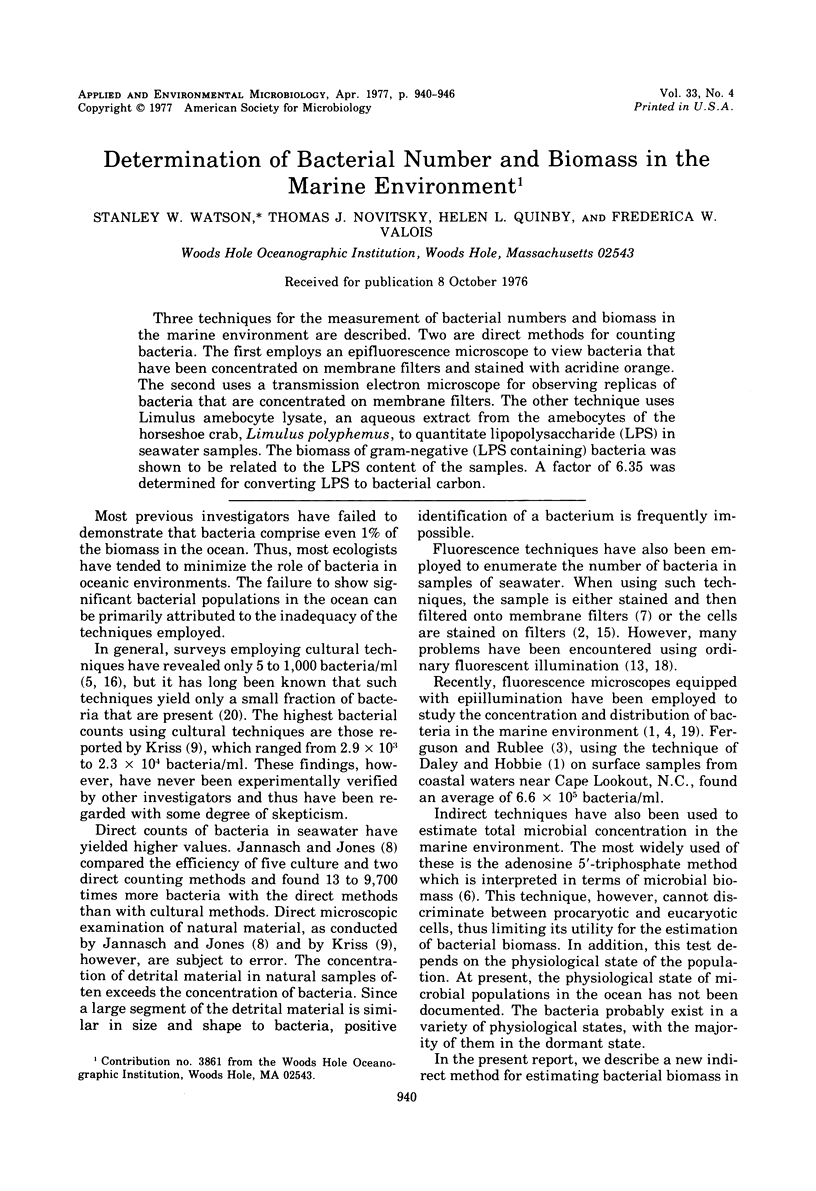
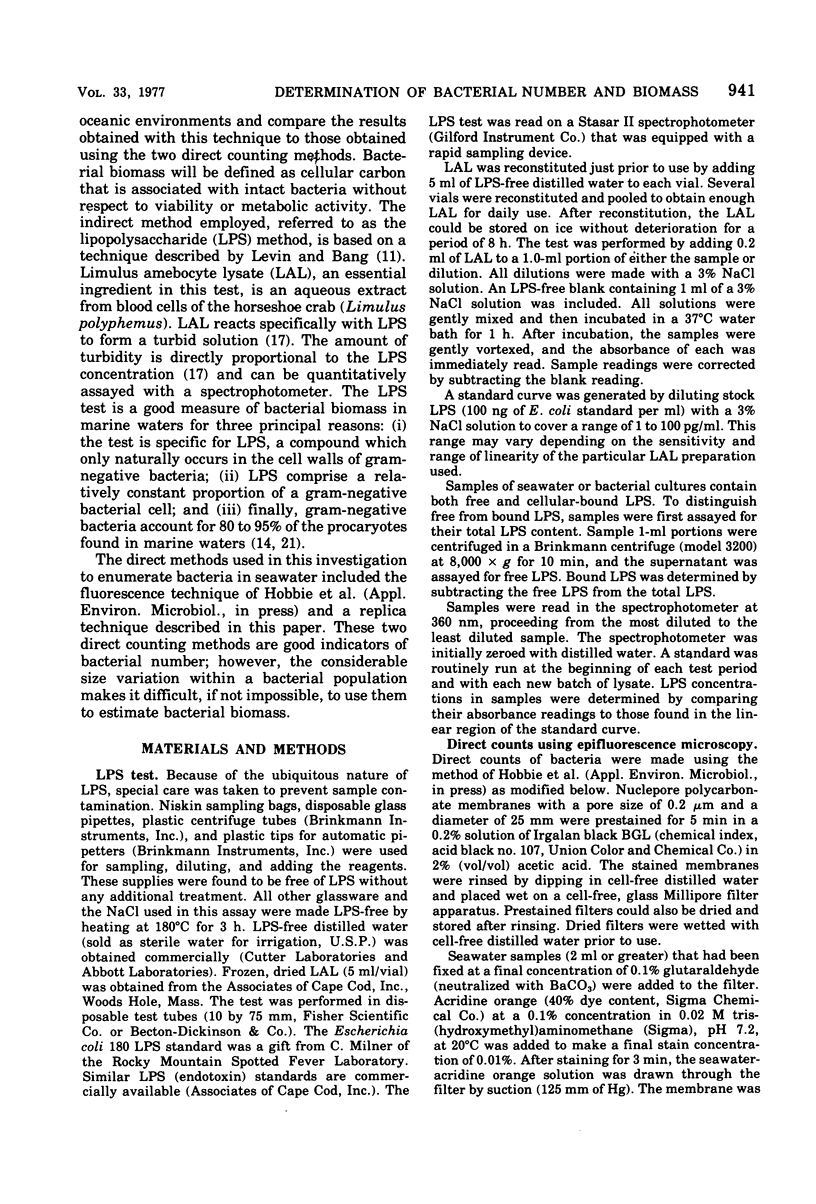
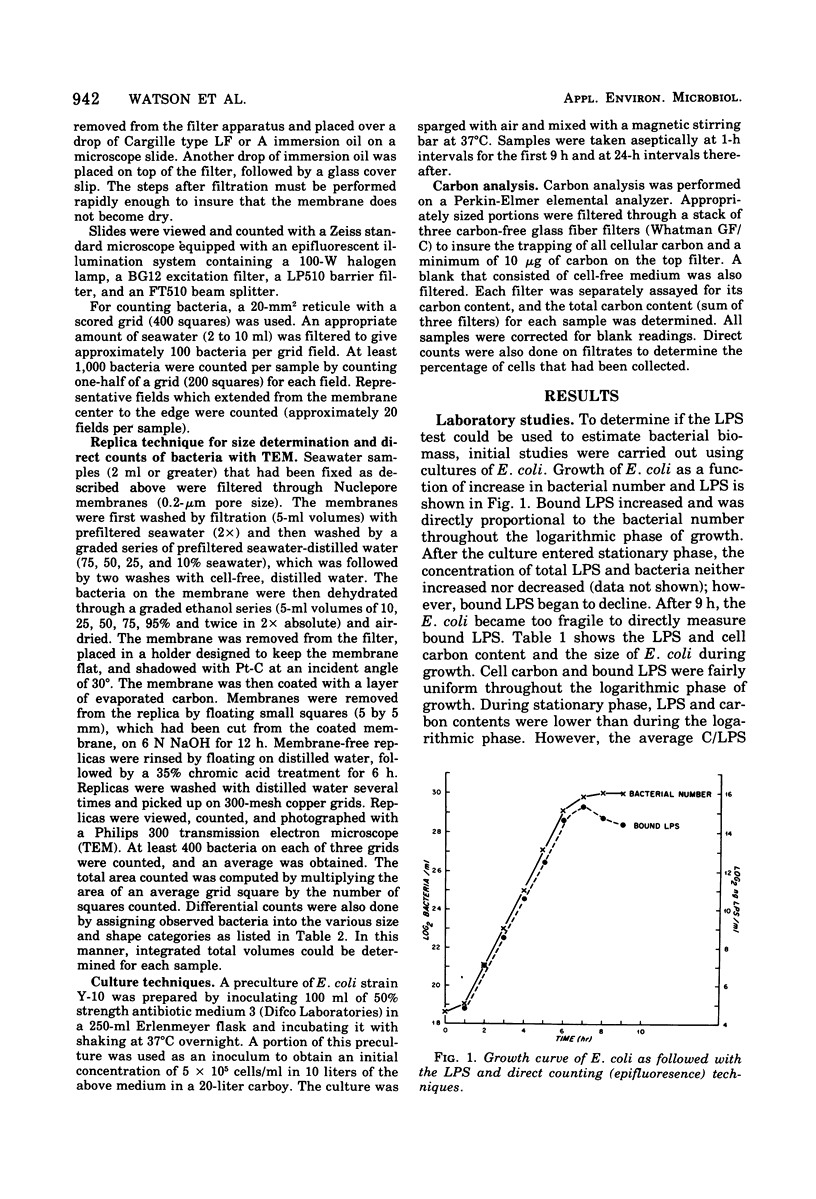
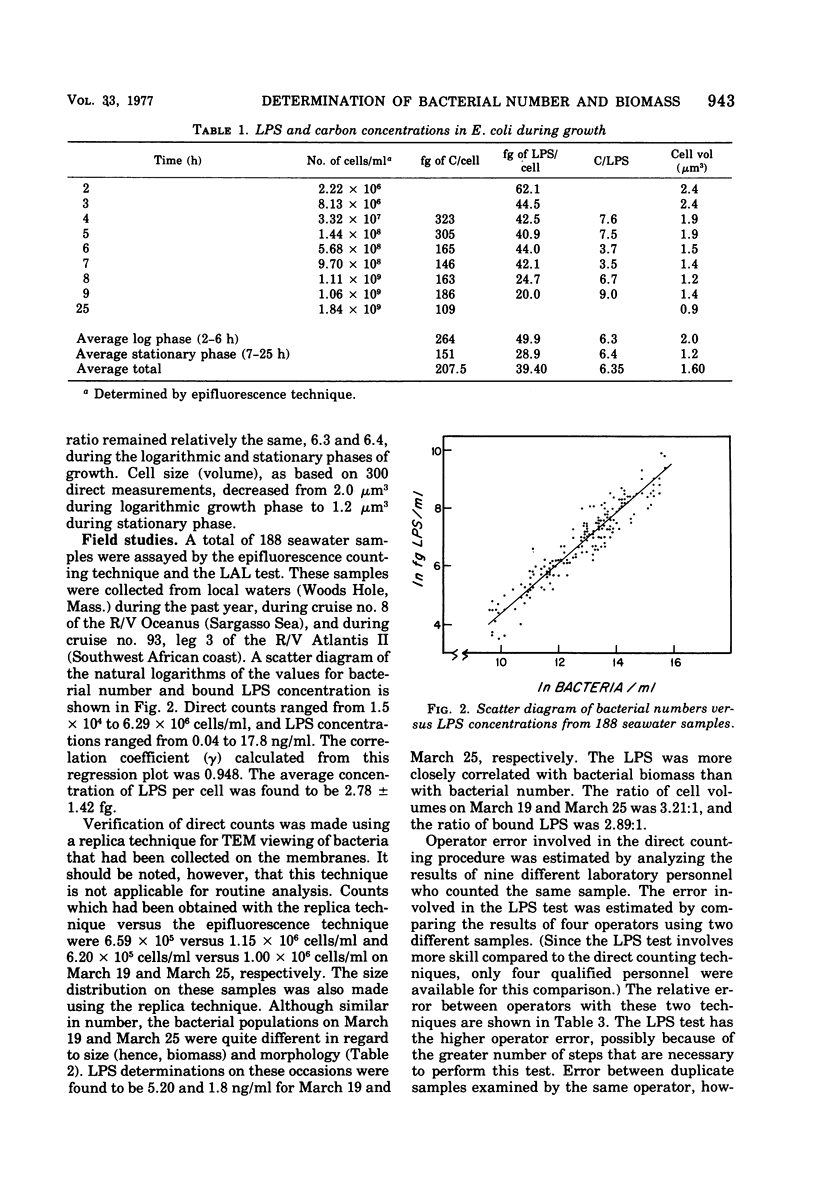
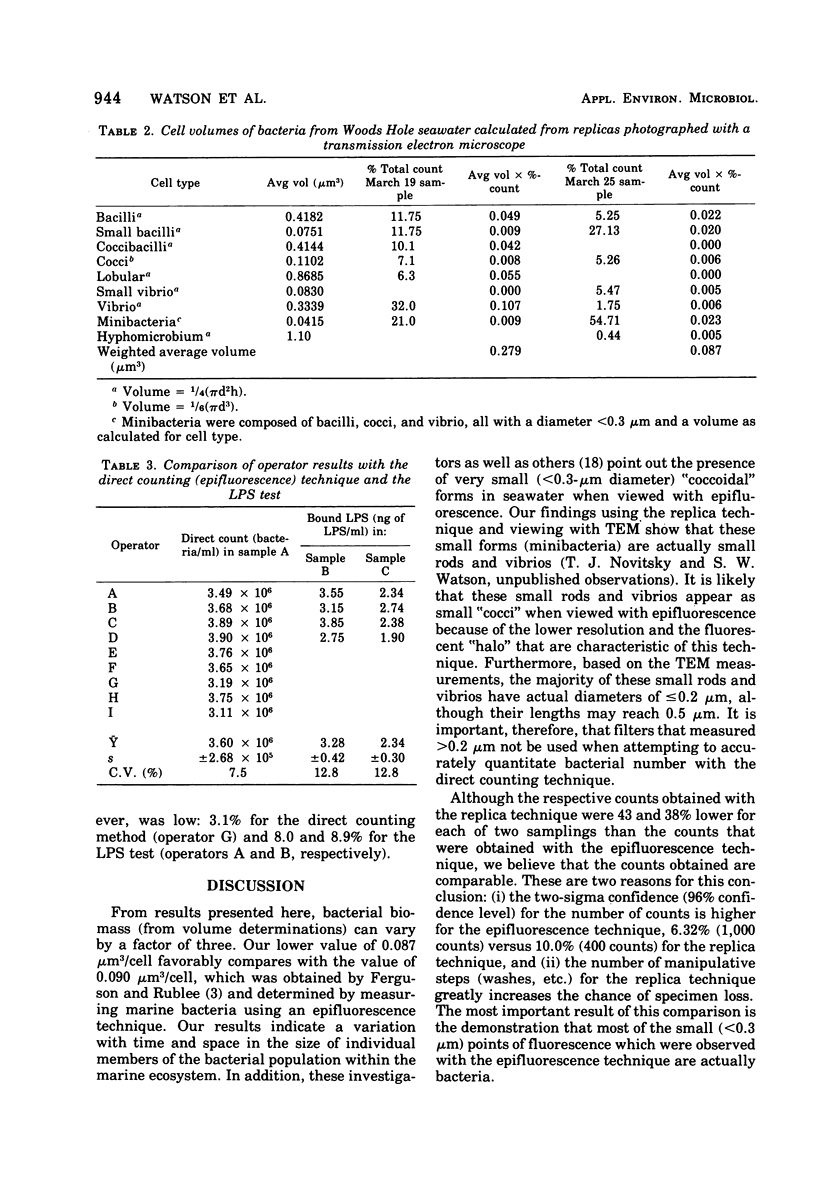
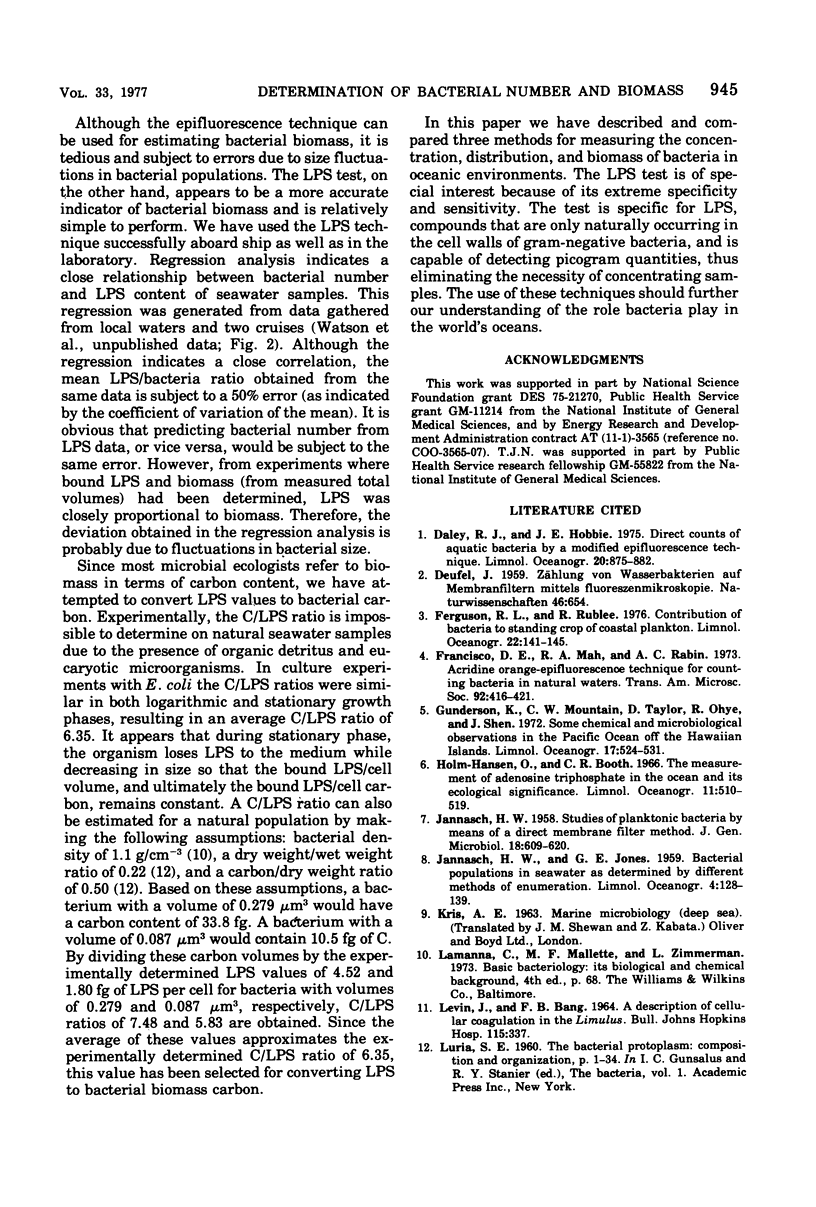
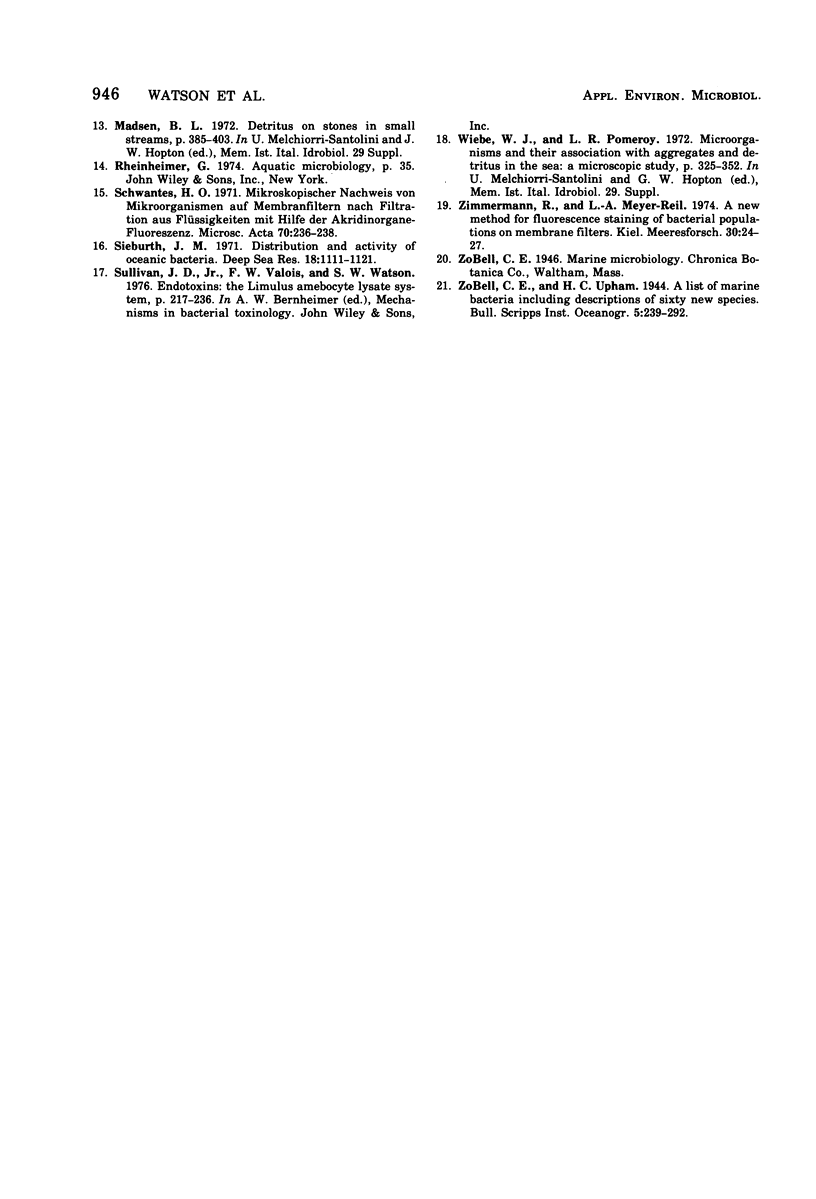
Selected References
These references are in PubMed. This may not be the complete list of references from this article.
- Francisco D. E., Mah R. A., Rabin A. C. Acridine orange-epifluorescence technique for counting bacteria in natural waters. Trans Am Microsc Soc. 1973 Jul;92(3):416–421. [PubMed] [Google Scholar]
- JANNASCH H. W. Studies on planktonic bacteria by means of a direct membrane filter method. J Gen Microbiol. 1958 Jun;18(3):609–620. doi: 10.1099/00221287-18-3-609. [DOI] [PubMed] [Google Scholar]
- LEVIN J., BANG F. B. A DESCRIPTION OF CELLULAR COAGULATION IN THE LIMULUS. Bull Johns Hopkins Hosp. 1964 Oct;115:337–345. [PubMed] [Google Scholar]
- Schwantes H. O. Mikroskopischer Nachweis von Mikroorganismen auf Membranfiltern nach Filtrieren aus Flüssigkeiten mit Hilfe der Acridinorange-Fluoreszenz. Z Wiss Mikrosk. 1971 Jul;70(4):236–238. [PubMed] [Google Scholar]


